Name Principessa Mafalda Length 146 m | Launched 22 October 1908 Beam 17 m | |
 | ||
Builder Cantiere Navale di Riva Trigoso | ||
The SS Principessa Mafalda was an Italian transatlantic ocean liner built for the Navigazione Generale Italiana (NGI) company. Named after Princess Mafalda of Savoy, second daughter of King Victor Emmanuel III, the ship entered NGI's South American service between Genoa and Buenos Aires in 1909. At the time of her completion she was the largest Italian passenger ship afloat. The Mafalda was known for her luxury and was the preferred mode of travel for such celebrities of the day as Carlos Gardel.
Contents
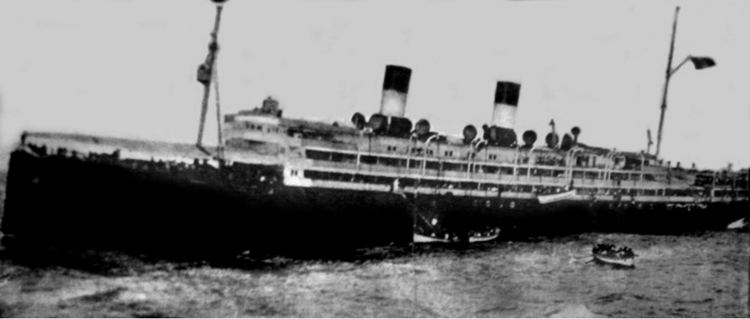
On 25 October 1927, while off the coast of Brazil, a propeller shaft fractured and damaged the hull. The ship sank slowly in the presence of rescue vessels, but confusion and panic resulted in 314 fatalities out of the 1,252 passengers and crew on board the ship. With a casualty rate ten times that of the Andrea Doria, the sinking is the greatest tragedy in Italian shipping and the largest ever in the Southern Hemisphere in peacetime. Due to the human error involved and high mortality among steerage passengers, the disaster has been called the "Italian Titanic." The nature of the vessel's sinking has also been compared to the modern Costa Concordia disaster.

Early history
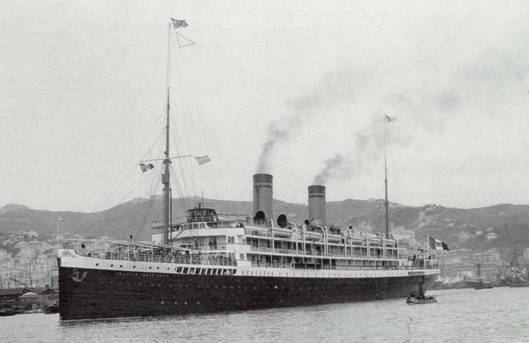
Principessa Mafalda was built at Cantiere Navale di Riva Trigoso with her sister, the SS Principessa Jolanda. In 1907 the Jolanda sank during her launch in a dramatic spectacle. This was due to mistakes in launch procedures and not flaws in vessel design. Mafalda was launched on 22 October 1908 without her superstructure installed in order to avoid the same accident. She was finally completed on 30 March 1909 and became the flagship of the NGI. In 1910 she played a part in the development of long distance radio communication when Guglielmo Marconi conducted experiments on board.
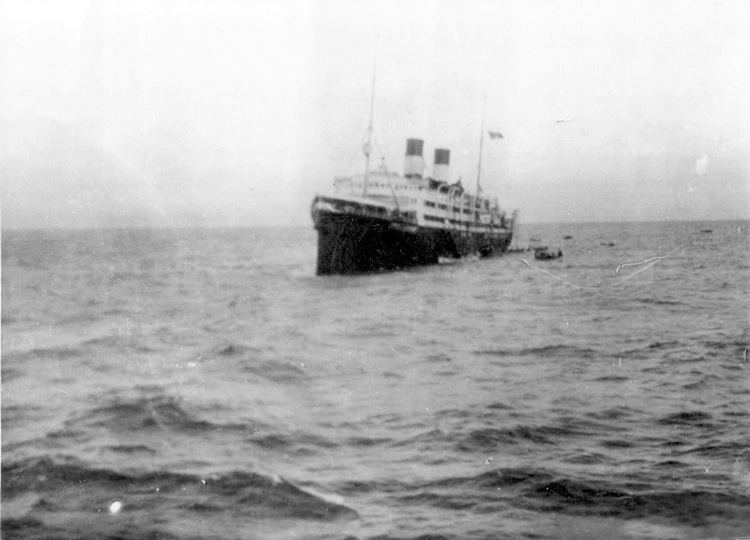
Specifically designed for voyages between Genoa and Buenos Aires, Mafalda was considered the best ship on this route for several years. She had a luxurious two-story ballroom, spacious cabins in Louis XVI style and traveled at a relatively rapid 18 knots. On the eve of World War I, 22 August 1914, she made her one and only voyage between Genoa and New York City. During the war she was requisitioned by the Italian Royal Navy and housed officers at Taranto. She resumed her prewar South American service in 1918. She remained the NGI's flagship until 1922, when the SS Giulio Cesare assumed the role. By 1926 the Mafalda had made over 90 long but uneventful round trips and had a reputation for "faded luxury."
The last voyage
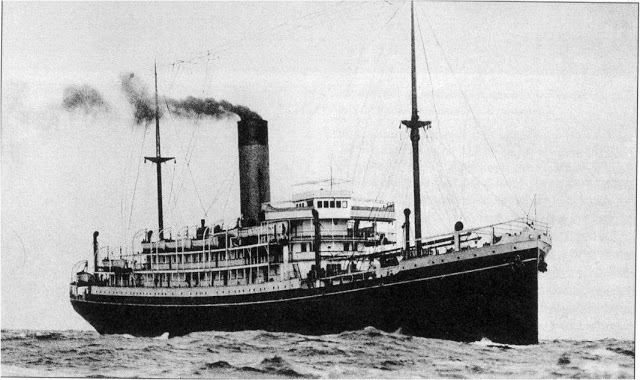
On 11 October 1927 Principessa Mafalda sailed from Genoa for Buenos Aires with intermediate stops scheduled at Barcelona, Dakar, Rio de Janeiro, Santos and Montevideo. The ship was under the command of Captain Simon Gulì with 971 passengers and 281 crew aboard. She also carried 300 tonnes of cargo, 600 bags of mail, and 250,000 gold lire destined for the Argentine government. The trip was to take 14 days.
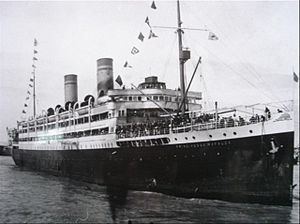
It soon became apparent that the ship was in a poor condition. Mafalda left Barcelona almost a day late due to mechanical problems and several times it slowed to a complete stop on the high seas, sometimes for hours. Water in bathrooms became intermittent. A refrigeration system failure caused tons of food to spoil, resulting in numerous cases of food poisoning. At the stop at Cape Verde, Captain Gulì telegraphed the company to request a replacement vessel, but was told "Continue to Rio and await instructions." In the era of Italian fascism he could only do as ordered. With the ship resupplied with fresh food and partially repaired, he brought her out into the North Atlantic.
By 23 October the Mafalda had developed a small but noticeable list to port. The passengers, who had received few explanations for the previous breakdowns, now began to worry that the ship was taking on water. Although far behind schedule, she was finally traveling at full steam off the coast of northern Brazil on the 24th. Life aboard then flowed more quietly with the longest part of the journey nearly complete. On crossing the equator, a line-crossing ceremony was organized on deck with orchestra music and a huge cake.
Around 17:15 hours on 25 October 1927, 80 miles off Salvador de Bahia Brazil near the Abrolhos Archipelago, the ship was rocked by several strong shudders. Passengers were initially assured that this was only due to the loss of a propeller and the situation was not dangerous. However, on the bridge the engineer reported that the starboard propeller shaft had indeed fractured, but it had also traveled off its axis and cut a series of gashes in the hull. Complicating matters, the watertight doors could not be fully closed. At 17:35 Captain Gulì sounded the alarm and ordered the radio officer to send SOS. He also stated this was merely a precaution as he believed his ship could stay afloat until the next day. Two ships, the SS Empire Star (British) and SS Alhena (Dutch), arrived quickly. With clear weather and rescue nearby, it seemed that the situation was in hand. However, panic began to spread among both passengers and crew.
There are many conflicting versions about what happened next. What is known is that officers had difficulty maintaining order, some passengers were armed, and the ship kept moving forward in a wide circle for at least an hour. Rescue vessels received confusing signals about how to assist. Not all the lifeboats could be launched due to the list, some were rushed by the crowd, and many were not even seaworthy. Furthermore, an unknown but significant number of crew members left the ship at the outset. The first lifeboat away was filled almost entirely with crew, including the purser. Those officers and crew who did remain on board, while heroic, were largely ineffectual given the situation. The rescue vessels were therefore left to manage matters on their own as darkness fell. A few remaining lifeboats did shuttle between Mafalda and Alhena, but some were capsized by the panicked throngs. Amid final scenes of chaos, the captain drowned and the chief engineer reportedly shot himself.
At 22:10, nearly five hours after the initial accident, Malfalda sank stern first. Since she went down on a busy shipping lane, a number of vessels arrived to assist. By daybreak the Alhena had picked up over 450 survivors, with Empire Star, Formosa, Rosetti and other vessels rescuing the rest. Many controversies remain about exactly what transpired and who was responsible for the death toll. Reports of gunfire, sharks in the water, exploding boilers, and nearby ships refusing to assist were widely published but never confirmed. Even the exact wreck site remains a matter of dispute today.
Aftermath
An investigation by the Italian Navy Board began immediately following the tragedy. It determined that a joint in the propeller casing was to blame for the accident and it ordered that propeller shafts on all Italian-registered vessels be fitted with devices designed to avoid such accidents. It also determined that six lifeboats located on the stern could not be used because of poor placement. Issues of the vessel's age, inadequate maintenance or the problematic actions of the crew were not investigated. However, the NGI was ordered to pay heavy compensation to the families of victims.
A journalistic investigation conducted years later in 1956 by the weekly L'Europeo established more of the historic facts known today. A 2012 analysis demonstrated that while the number of casualties among steerage passengers was indeed high, the death rate between first and third class was actually the reverse of that of the RMS Titanic, more first class passengers died (51.8%) than steerage class deaths (27.8%).
Namesake
In what has been called a further "twist of fate" to the history of the Principessa Mafalda, Princess Mafalda of Savoy herself also met with tragedy. Imprisoned by the Nazis during World War II for use as a hostage to manipulate her father, King Victor Emmanuel III, she died at Buchenwald concentration camp in 1944, aged 41.
